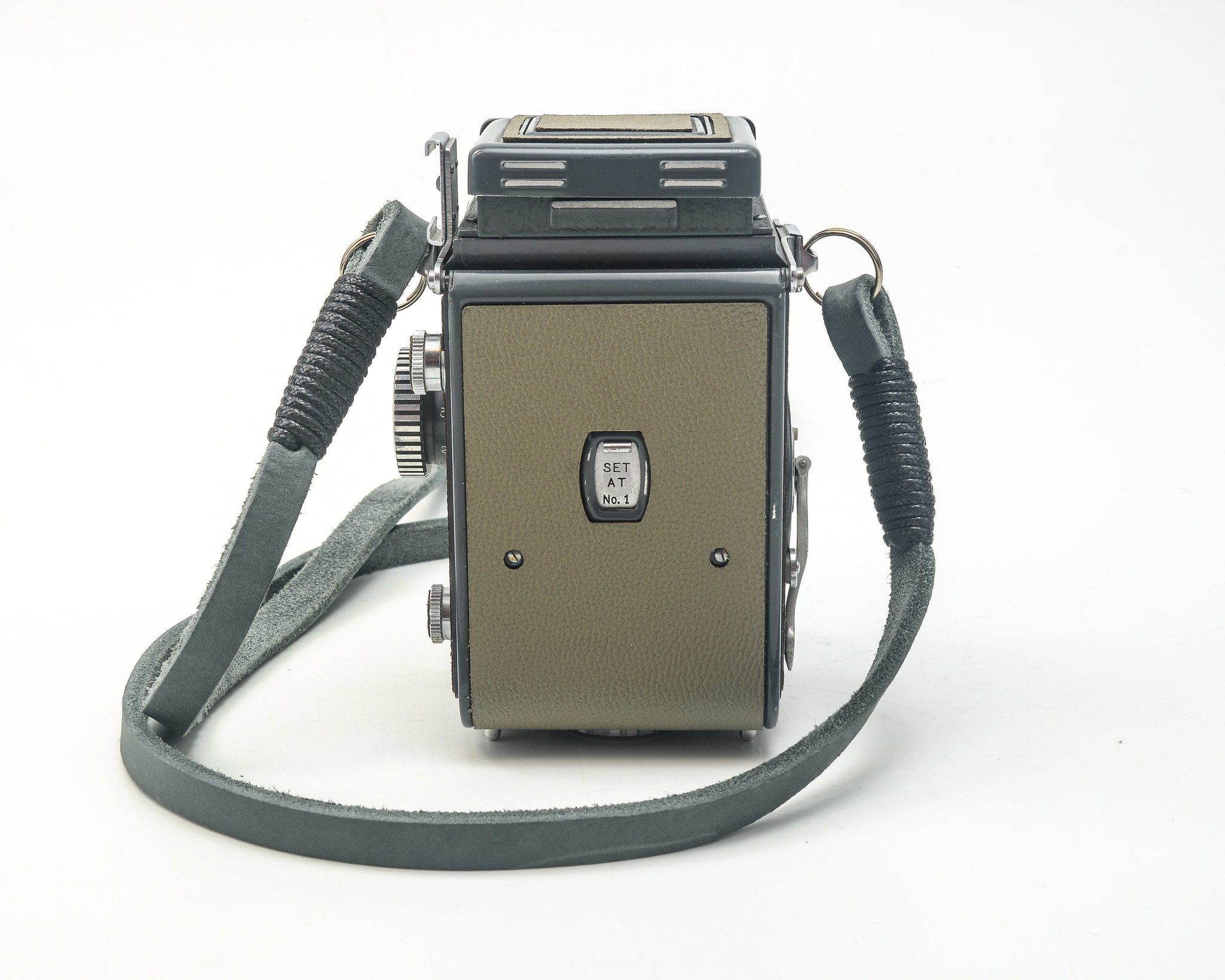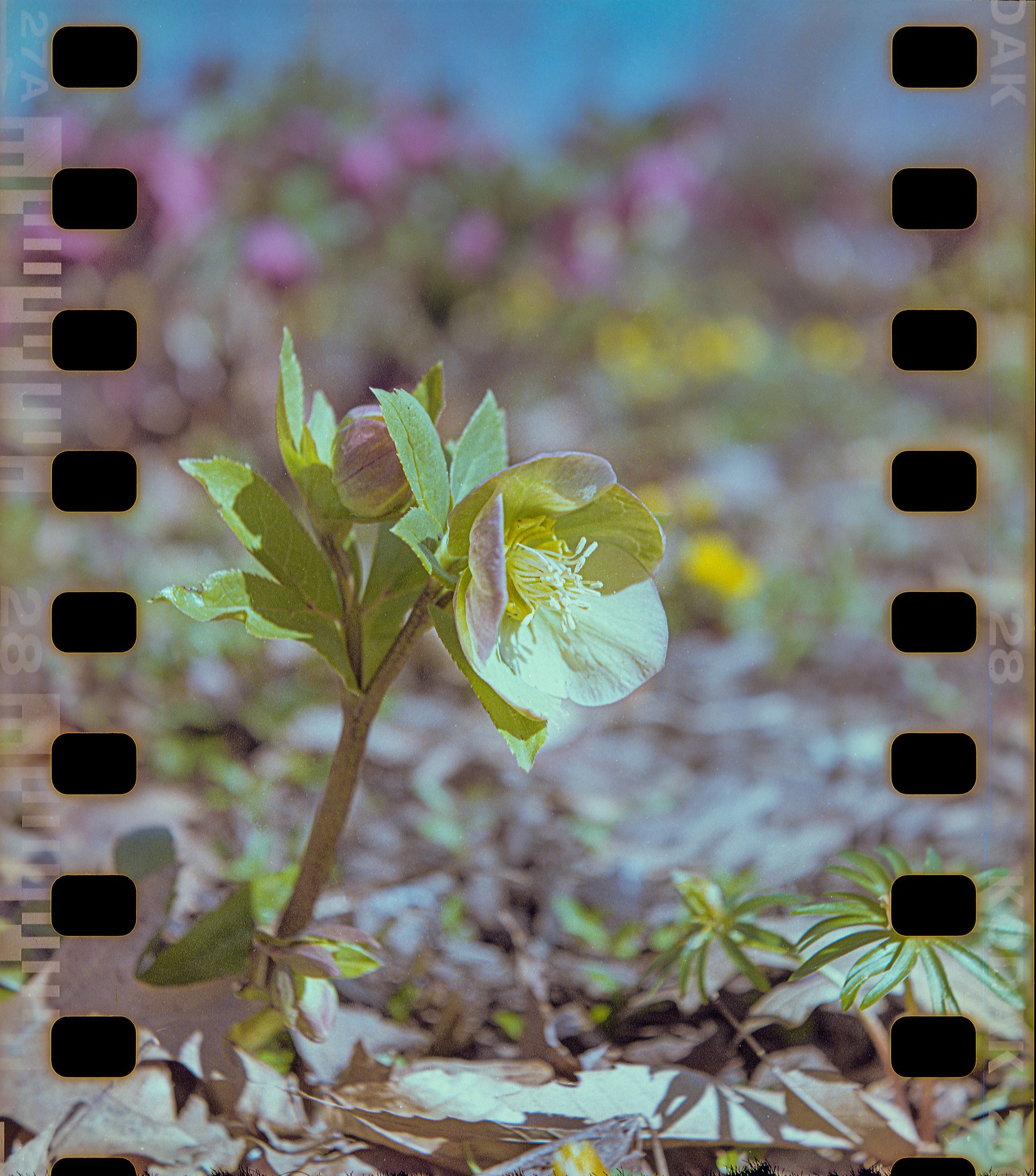A Tale of Two “Babies” – PLUS: Patent Infringement, a Lawsuit, and how Kodak killed the 4x4 image format. Part 2 of 2
This is part 2 of 2. I had planned to make this a single post, but at some point, I realized it was going to be just way too long. In this part, I’ll dive deeper into the “Baby” Rolleiflex and Yashica 44 cameras and give my thoughts on which one to purchase if you are considering one.
As I covered in the first part, the “Baby” Rolleiflex was introduced to market in 1957, and subsequently a lot of other “me too” 4x4 127 TLR’s showed up the following year. Most notable was the Yashica 44, which by no stretch of the imagination was a blatant near-copy of the Rolleiflex.
Here are some images of the Baby Rolleiflex:
And for comparison, here are some of the Baby Yashica:
I personally own both of these cameras, and they are the ones pictured in the images above. The Yashica was my first 4x4 purchase before the Rollei. Well, I should say that “a Yashica” was my first purchase.
The one pictured here is actually my second Yashica 44. The first one I purchased in-person at a swap meet. It was the first time I had held a Yashica 44 and I was smitten. So smitten, in fact, that I failed to practice what I preach – give the camera a thorough check before buying. After getting it home and shooting a few rolls thru it the following week, I couldn’t figure out why so many images were out of focus or had weird out-of-focus areas. It turns out the camera had been dropped hard at some point, and the impact bent the front standard. It also dented the bottom left front quite severely, but all that had been covered up with auto-body filler, paint, and some new leatherette. There was no saving this one, so its now a parts camera. Shame on me.
Moving on.
My next Yashica 44 was purchased from a reputable national online camera store, and it came complete with a nice grey lens hood and a guarantee. It functioned perfectly, but needed a good cleaning, some new leatherette, and a new strap. While I was cleaning it I took it apart, replaced the mirror with a new one, and installed a Rick Oleson bright screen with a grid and split-focus center.
After I put several rolls thru the Yashica, I liked it so much that it made me wonder - just how good was the Rolleiflex 4x4? Could the original be even better than the copy?
At that time, I already had in my collection several Rolleiflexes and Rolleicords that take 120 film, but not a Baby Rollei. I found one in Very Good condition on eBay complete with the original strap and hard case, and won it with a bid during the last 10 seconds of the auction. I was very pleased with myself as the price was actually lower than what I paid for my second Yashica 44. After receiving it I cleaned it up, checked operation, and shot several rolls through it. All was good!
Now that I’ve spent time with both, I can make a good comparison between the two. Below are my thoughts. I’ve rated each camera for its attribute on a scale of 1 to 10, with 10 being the best score. At the end I’ll add it all up and give my final thoughts.
COST: Yashica = 8, Rollei = 6
Like almost all film gear, prices on these two cameras have risen over the last few years.
Going price for a good to very good condition Yashica 44 on eBay is between $200-$250. There are cheaper later versions like the LM, etc. I would steer clear of those. For the purposes of this I am just talking about the original Yashica 44 model.
The Baby Rollei is going for about $300-$450 for a good to very good example. More if they come with a full set of accessories including the hard case.
One could argue that you could purchase a decent 120 full-size version of either for the same amount of money, and spend less on cheaper 120 film. If you are considering the larger 120 versions instead, an early Rolleiflex Automat 3.5, a Rolleicord series 1 with a Triotar lens, or a YashicaMat would be good options.
LOOKS: Yashica = 7, Rollei = 9
They look nearly the same. The grey color is striking, and sets them apart from the countless other all-black TLR’s out there. I personally don’t like the cold-shoe mount on the Yashica. It looks like some marketing person said it had to have a mount to help with the comparison to the Rollei and just stuck one on there at the last minute. Also, the “Rolleiflex” name plate on the Rollei does add some value, recognition, and swagger.
PORTABILITY: Yashica = 8, Rollei = 8
Both are small. You can hold each one in the palm of your hand. They fit in a small bag. Maybe not as small and light as a Holga, but that’s an unfair comparison.
FILM LOADING: Yashica = 7, Rollei = 9
Film loading is one of the biggest user differences between the two.
The Rollei is easy; just load your film roll in the bottom carrier, bring it up and into the take-up spool, and wind until the “START” arrow lines up with the round dots. Then close the door, and wind on until the “1” appears in the counter, which also cocks the shutter. Then you are ready to go. The Rollei would get a “10” here if they kept the “automat” function of the larger Rolleiflexes, where there’s no need to align anything when loading the film, and the camera just senses the film thickness as you crank to automatically set it to “1”.
The Yashica requires you to load your film roll in the top carrier, bring it down and into the take-up spool, close the back, open the red window, and crank until you see the “1” come up in the red window. Then close the red window, and push the counter reset button next to the crank to set it to “1”. That’s a lot to remember. But wait – you still aren’t ready to shoot. Unlike the Rollei, the advance of the film to the next number does not cock the shutter. You have to do this separately every time.
FILM ADVANCE: Yashica = 8, Rollei = 7
The Yashica gets the nod here, only because it has a crank versus a knob.
In the 120 Rollei formats, two of the main things that distinguished the Rolleiflexs, which were the “higher end” models, from the Rolleicords was the winding crank and automat loading feature. The Baby Rolleiflex has neither of those, thus is really more of a Rolleicord than a Rolleiflex in terms of specifications. Mind you, neither is a bad camera, but the inconsistency in naming is strange. I guess corporate marketing was no different in the 1950’s than it is today.
SCREEN BRIGHTNESS: Yashica = 5, Rollei = 4
The original screens in both cameras are dark, with the Yashica screen being marginally brighter than the Rollei.
I added a Rick Oleson Bright Screen to my Yashica and its leaps and bounds better than it was. Comparatively speaking, it now makes the Rollei with its stock screen feel like you are looking down a dark hole when trying to focus.
I need to upgrade the Rollei’s screen.
This is something to consider when purchasing either camera: you’ll want to spend another $100 or so on a brighter viewing screen.
CONTROLS: Yashica = 6, Rollei = 6
I’m not in love with either of these cameras regarding their controls to change the F-Stop and Shutter Speed. Each one takes some getting used to, and switching between the two when shooting both can be problematic.
Unfortunately, neither camera received the same control layout that their larger brothers have, and I assume that was due to space issues on such a small camera.
IMAGE QUALITY: Yashica = 7, Rollei = 7
Both cameras have good lenses, and produce good results when used correctly. I could take images I’ve shot with both of them and throw them together in a pile, and not be able to tell you which camera shot each image, unless for some reason I had a specific memory of that day and camera.
The only reason I didn’t give a higher rating for both is the format. Honestly, if I am looking for great image quality, I’m going to grab a full-size Rolleiflex or a Yashicamat for that glorious, big, 6x6 negative that the 120 film makes possible.
EXTRAS/OTHER: Yashica = 6, Rollei = 7
I give the slight nod here to the Rollei, as it has a host of factory produced extras that you can use on it like close-up lenses, colored filters, etc. Rollei also designed the bottom of the Baby so that it takes the same Rolleifix tripod mount as its larger brothers, which was rather ingenious. They set the notched circle that contains the 3/8” female threads just a bit further back than normal, which allows the Rolleiflex mount to line up correctly and work with it and the notches on the front of the camera.
Both cameras are Bay1 lens filter mounts, so in theory the same filters will work on both. The lens hoods are NOT interchangeable though, due to the flanges on the Rollei being closer together. It takes a special Bay1 hood with a cut-out.
The Yashica does one thing that the Rollei can’t, although it wasn’t intended to do so when it was manufactured. At some point in time, someone figured out that if you remove the two small screws that hold the top roller on near where the feed spool goes, you can fit a 35mm film cartridge in there and shoot it. More on this can be found here.
Some examples from my Yashica with 35mm film:
TOTALS: Yashica = 62, Rollei = 63
So the Rollei wins by 1 point. That’s not much given the price difference between the two. This shows that the two cameras really are very similar. I think the most important thing is to buy the best, nicest sample you can afford.
If for some reason I was told that I could only keep one of my Baby’s, it would probably be the Yashica. I personally like the flexibility of being able to shoot 35mm film in it easily, and not being too concerned about something happening to it while I’m out and about.
That said, I look at the 4x4 format as choice of convenience or novelty. If I am going for a hike or a walk-around and really want a small, lightweight set-up I’ll grab one of the Babies. If I can carry a small pack and am looking to record some quality images, I’ll probably grab one of their big brothers.
It’s good to have choices.
Thanks for reading! As always, if you have any questions, please reach out.
Jeremy
























